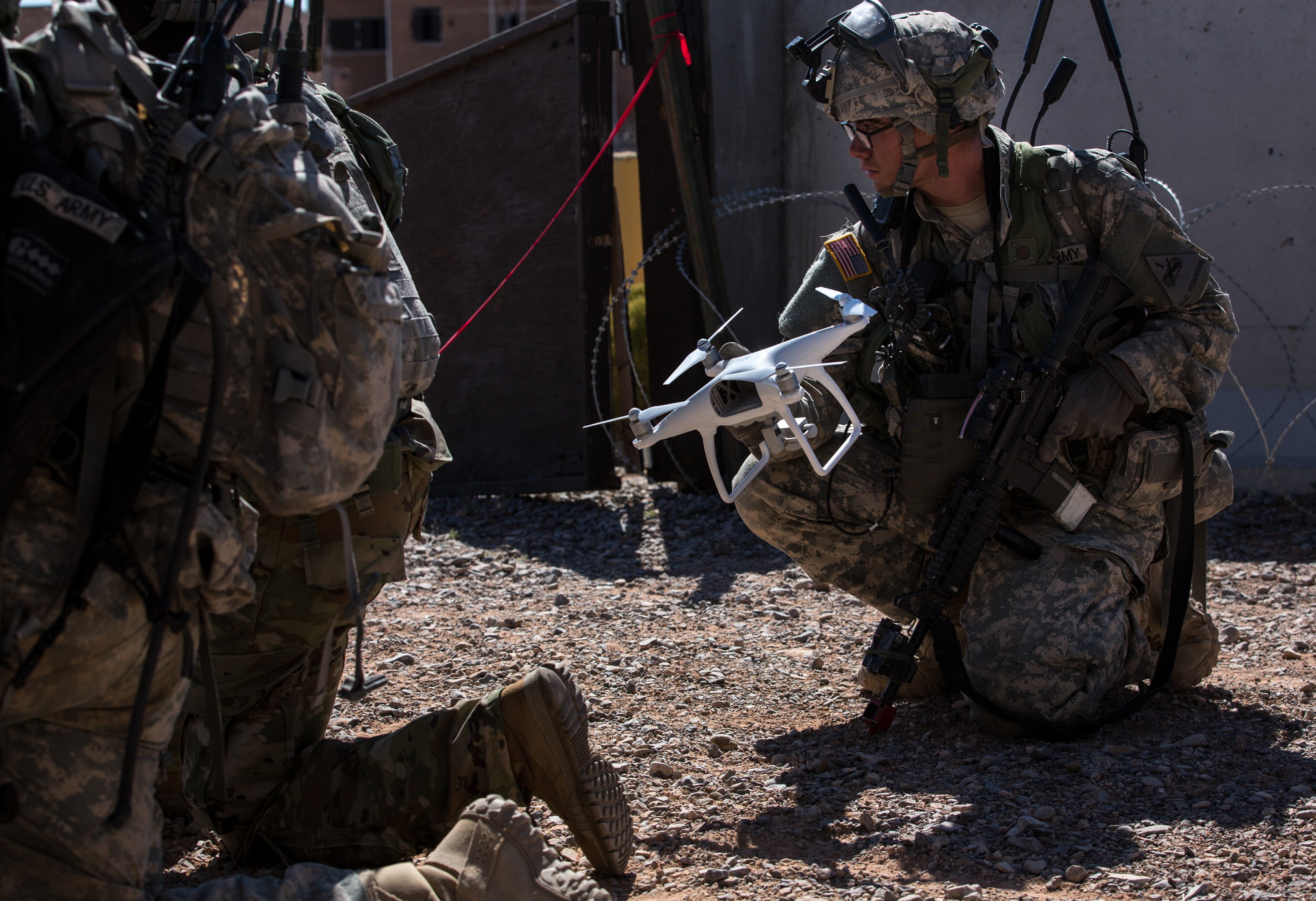WASHINGTON — Three vendors demonstrated capabilities to destroy small drones using low-collateral effects interceptors at Yuma Proving Ground, Arizona, earlier this month as part of a bigger Pentagon effort to develop enduring systems capable of combating the growing and evolving threat, an Army official told Defense News in an April 15 interview.
Boeing-owned Aurora Flight Sciences, Elta North America and Xtend were each evaluated against different threat scenarios over the course of a week in April.
The demonstration is the first in a series of events — likely to take place twice a year — where the joint force will examine the most “impactful solutions” that fill current capability gaps and are ready for transition into fielded systems, said Col. Greg Soule, the director for acquisition and resources at the Army-led Joint Counter-Small Unmanned Aircraft Systems Office.
Following validation of the office’s operational requirements by the Joint Requirements Oversight Council in September 2020, the JCO moved out to address a list of capabilities. Its plan was to first focus on low-collateral effects interceptors, and the Air Force was assigned as the lead service for the effort.
The JCO issued a request for information, asking for whitepapers laying out technical solutions. The office received 37 submissions, Soule said.
“Some of those fit the category, others did not,” he said. “Then there were others that we screened out that fit the category, but they were already involved with government-funded, government-sponsored contracts in the same arena. We didn’t want to look at those at this demonstration. We wanted to bring brand-new ideas and products in from industry.”
That left 10 who were invited to give oral presentations. From that group, five were selected to attend the demonstration at Yuma, Soule said.
However, one of the vendors screened itself out before the demonstration because it didn’t feel its product would be ready by April, and another had to bow out at the last minute because of members of its team were infected with COVID-19, Soule said.
RELATED

The three remaining teams arrived a week prior to the demonstration to run flight tests, Soule said.
During the official demonstration, the systems ran through 16 scenarios against a variety of threat-representative targets ranging from fixed-wing to rotary-wing quadcopters flying a variety of different patterns such as straight in, across, and in hover mode at different speeds and altitudes, “so we could have a good, well-rounded snapshot of everybody’s system,” Soule said.
Aurora Flight Sciences brought to the demonstration its Class 2 unmanned quadcopter system — MIDAS — equipped with an air gun. When the quadcopter gets close enough to the threat, the air gun fires a round consisting of two copper discs attached by a 12-inch Kevlar string. The gun shoots in six-round bursts at a target at a high velocity with the intent to foul up the rotor blades of the threat system.
If the first round doesn’t neutralize the target, the UAV is capable of shooting subsequent rounds. If it does destroy the threat, it can move onto other targets, Soule said.
Elta North America, a U.S.-based subsidiary of Israeli firm Elta Systems, brought DKD — or Drone Kill Drone — to the evaluation. The quadcopter is smaller than MIDAS and is equipped with a net system on top, “so its intent is to fly up to the threat and get entangled with the target, and they would both fall to the ground,” Soule said.
The system is not reusable, he added.
The final system at the demo, Skylord Griffon, from Israeli startup Xtend, also uses a net, but it instead positions itself over the target to tangle the net in the drone’s rotors. Then the net detaches so the quadcopter can continue on to another mission, according to Soule.
Now that the demonstrations are over, each participant will receive a report detailing its performance against the criteria, he noted.
The Air Force, as the service lead, will welcome participating systems and other future systems for further evaluation and potential inclusion in a development program funded by the JCO starting later this year, Soule said.
The Air Force plans to release a request for information to industry calling for systems for its next round of assessment that will also be considered against already funded government solutions.
The JCO and the Army’s Rapid Capabilities and Critical Technologies Office will hold a demonstration in September to focus on other capabilities beyond low-collateral effects interceptors, Soule said. “Specific topics are still being decided upon,” he added, but an RFI is expected to be issued in May laying out capability focus areas for the event.
Jen Judson is an award-winning journalist covering land warfare for Defense News. She has also worked for Politico and Inside Defense. She holds a Master of Science degree in journalism from Boston University and a Bachelor of Arts degree from Kenyon College.






